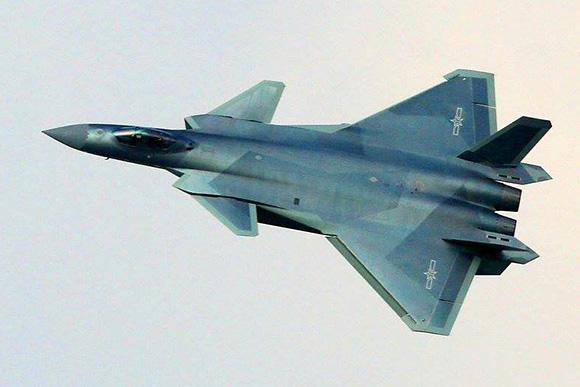The Chinese fifth-generation fighter Chengdu J-20 performed a few hours ago, test flights on Chengdo, in southwest China, with a new air-air livery. It is probably the final choice chosen for the low initial production rate.
There are four J-20 fighters currently operating with serial number 2001, 2002, 2011 and 2017. The first two, 2001 and 2002, have been used as technological demonstrators while the 2011 and 2017 are in pre-production configuration. The configuration of the aircraft has not changed.
China has completed four J-20 and within the next six months this number could triple. The Chengdu J-20, has officially entered Low Rate Initial Production (LRIP) last June. The Chengdu J-20 project, fifth generation fighter took off for the first time in January of the 2011, is defined by the Pentagon as a long-range platform, able to penetrate heavily defended environments. The Chinese have always said that a fifth-generation platform, with performances similar to the F-22 but with the operating costs of the F-35, would come into service with Initial Operational Capacity by 2018.
The J-20 is a platform that draws inspiration from Russians, Americans and Europeans. It has similarities in design to the MiG 1.44 technology demonstrator which, in turn, recalls the EFA-2000. For the West, however, the Chengdu J-20 is inspired by the Northrop YF-23, the only prototype proposed together with the YF-22 for the Advanced Tactical Fighter project.
There are at least six variants for the Chengdu J-20: long-range interceptor, dogfight and escort, ground attack, long-range reconnaissance, electronic attack and launch pad for anti-satellite missiles. The J-20 is also currently equipped with two Russian-made turbojet engines, although the line fighter should be equipped with a national design and production engine.
The Chinese are aiming to exploit the technology of the Russian NPO Saturn AL-41F1 turbofans that equip the Su-35Es (Beijing has bought twelve) to develop a new propulsion system. Despite the efforts, the Chinese have not yet developed jet engines capable of achieving the performance of the Pratt & Whitney F119 and F135, which power the F-22 respectively. Raptor and the F-35 lightning of Lockheed Martin. The J-20 will not be able to reach its full potential until China is able to develop engines with a thrust-to-weight ratio of ten to one.
The Chinese concept of having two stealth fighters for different types of missions is the same as in the United States: F-22 / J-20 for air supremacy (dominion) and F-35 / J-31 for bombing, Close Air Support and tactical support. The J-20 should carry up to four BVRAAM missiles internally, beyond-visual-range air-to-air missiles and two short-range PL-10. It should reach a maximum speed of 2,100KMH according to an estimate made with two Saturn AL-31.
The first operational use for the J-20 will be in the South China Sea.
(photo: web)












